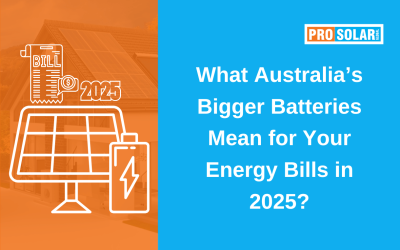When installing a home battery system, following proper battery installation safety requirements is not just a recommendation—it’s a critical requirement for protecting both property and people. From ensuring adequate physical protection with bollards to installing compliant smoke alarms and respecting clearance standards, homeowners must navigate a range of regulations to stay safe. This blog unpacks the latest Australian guidelines—including AS/NZS 5139:2019 and other expert advice—to provide homeowners with confidence and clarity.
Understanding AS/NZS 5139:2019 and Physical Protection
Australian Standard AS/NZS 5139:2019 sets stringent rules around where a Battery Energy Storage System (BESS) may be installed and how it must be protected, especially from external damage such as that from vehicles.
If a battery is installed in a garage or any area where a vehicle could potentially make contact, additional protection—such as a bollard—is required. However, it’s not always straightforward:- Bollards must be robust: Cheap, bolt‑down bollards often fail to actually prevent a vehicle impact. They can inadvertently concentrate impact on a small area and increase risk of battery damage.
- Alternatives exist: Elevated installation, wheel stops, or other non‑bollard barriers can provide better protection in some cases.
The standard notes:
“A BESS must not be installed in a location where damage from external influences may be expected, e.g. from damage by a vehicle. Additional measures may include installing bollards or installing the unit in a location that inherently prevents vehicle contact.”
This aligns with professional guidance that mechanical protection is necessary wherever vehicle impact is possible—even if remote.
Smoke Alarms: Mandatory in Many Installations
While AS/NZS 5139 doesn’t mandate smoke alarms in every case, several state-level requirements and rebate programs do:
- New South Wales (NSW): Installing a smoke alarm near the battery is recommended. It becomes mandatory under certain rebate/incentive conditions for indoor battery installations.
- Solar Victoria rebates: Smoke alarms in the vicinity of a battery may be a required component for rebate eligibility.
Moreover, general Australian smoke alarm laws require:
- Photoelectric alarms meeting AS 3786.
- Interconnected, hard‑wired units with 10‑year battery back‑up.
- Proper placement in every bedroom, hallway, and level—varies slightly by state.
This means homeowners should anticipate installing compliant alarms near battery zones to enhance safety and meet rebate or regulatory requirements.
Clearances, Barriers, and Proximity Constraints
To reduce fire risk and ensure safe operation, AS/NZS 5139 imposes several spatial constraints:
- Vertical clearance: If a battery is installed within 900 mm of the ceiling, a non‑combustible barrier must extend at least 600 mm beyond the battery’s sides and height.
- Horizontal & vertical proximity to habitable rooms: A minimum clearance of 600 mm horizontally and 900 mm above applies if there’s a window or vent into a habitable room.
- reventing obstruction of exit routes: Batteries must not be placed in escape paths, corridors, entryways, or directly under stairways.
These rules are designed to protect occupants in case of thermal events and ensure safe egress at all times.
Summary Table: Key Safety Requirements
| Safety Aspect | Requirement |
| Physical protection | Mechanical barrier (bollard or alternative) required if vehicle impact possible |
| Smoke alarm placement | Recommended or mandatory near battery in many jurisdictions; must comply with AS 3786 |
| Vertical clearance | 900 mm clearance; otherwise, non‑combustible barrier extending 600 mm above and sides |
| Proximity to habitable rooms | 600 mm horizontal and 900 mm vertical clearance required |
| Escape path blockage | Battery must not obstruct exit routes or passageways |
FAQs
Q1: Are bollards legally required for battery installations?
Mechanical protection such as bollards may be required if there is a realistic risk of vehicle impact. AS/ NZS 5139:2019 demands preventive measures if damage to the Battery Energy Storage System is possible. Alternatives like elevated installations or wheel stops may suffice, depending on the context.
Q2: Do I need to install a smoke alarm next to my battery?
While AS/NZS 5139 doesn’t mandate smoke alarms, many state rebate programs and safety guidelines do. NSW recommends smoke alarms near batteries, and Victoria’s Solar Victoria rebates may require them for indoor installs. It’s also good general safety practice.
Q3: How much clearance is needed above a battery?
If the battery is installed within 900 mm of the ceiling, a fixed non‑combustible barrier extending at least 600 mm past the battery’s sides and above it is required.
Q4: Can I install my battery near a habitable room?
Yes, but you must maintain a minimum of 600 mm horizontal and 900 mm vertical clearance from windows or vents into habitable rooms. A fire‑rated non‑combustible barrier may be required if within that distance.
Q5: Can a battery block an escape route?
No. Per AS/NZS 5139, batteries must never be installed in corridors, exit paths, under stairs, or within passageways. Safe, unobstructed access to exits is essential.
Conclusion
Adhering to battery installation safety requirements is vital to safeguard valuables—and lives. From requiring mechanical protection like appropriately engineered bollards or alternatives, to ensuring your battery doesn’t breach clearance rules or obstruct egress, every detail matters. Smoke alarms, while not always legally mandatory, significantly improve safety and may be needed for rebates.
By working with a reputable installer and referencing AS/NZS 5139:2019 and related guidelines, Prosolar Global customers can rest assured that their battery systems are both compliant and secure.
Talk to our expert by calling 1300 181 191 to get a fully compliant, safely installed home battery system that meets the latest regulatory requirements and gives you true peace of mind.
References
- AS/NZS 5139:2019 requirements on damage prevention and vehicle impact zones
- Advice on bollards vs alternatives like wheel stops
- Smoke alarm placement guidelines & rebate conditions
- Vertical and horizontal clearance regulations, including fire‑rated barriers




